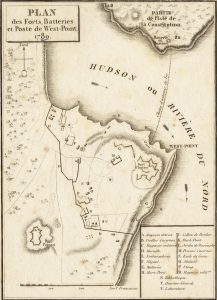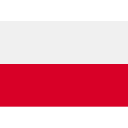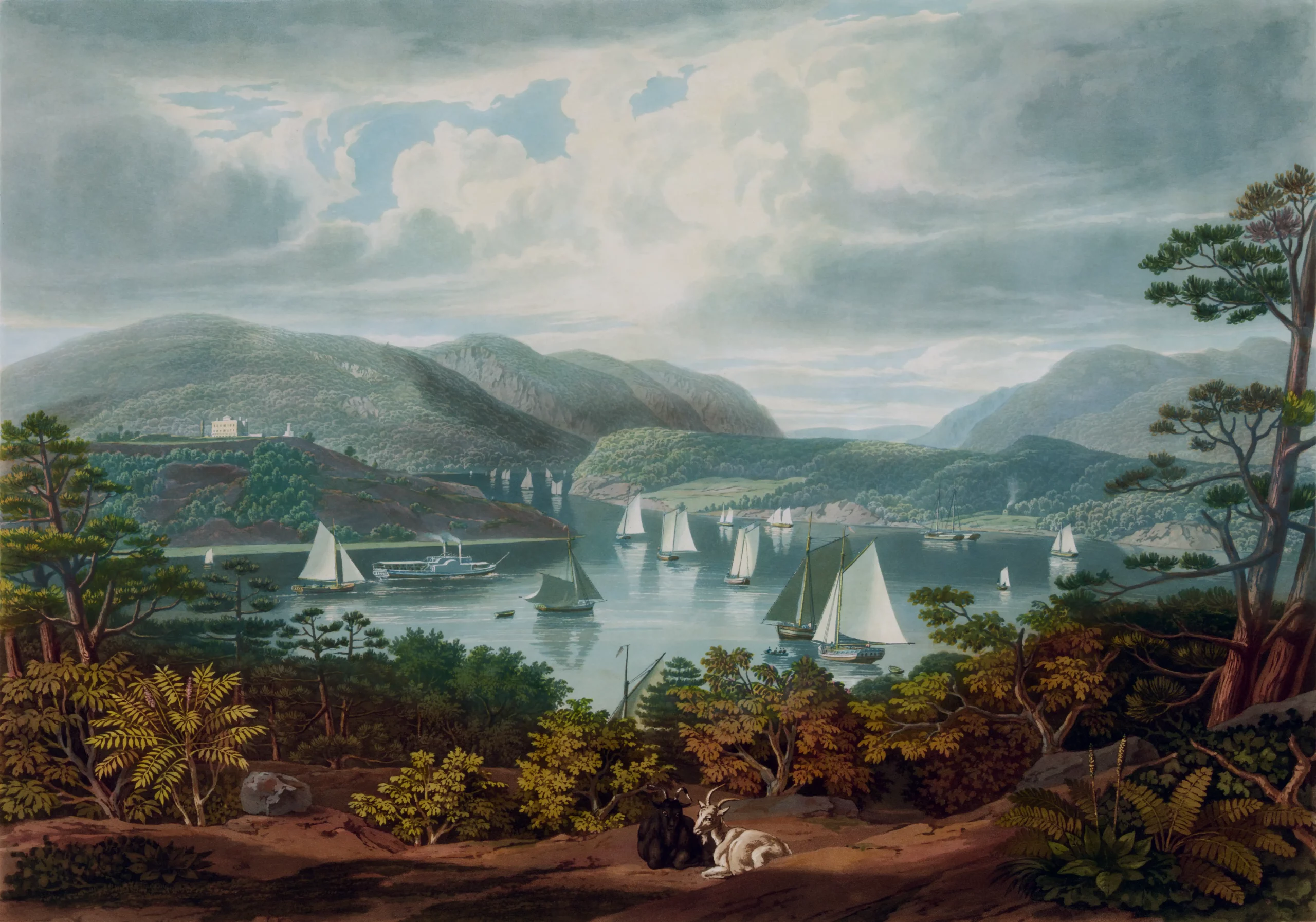The strengthening and defense strategy of the banks of the Hudson River from the very beginning of the war, i.e. from 1775, preoccupied George Washington’s head. The natural choice was the rise of West Point, because the river here narrows and bends sharply, breaking through the Hudson Higlands – rocky slopes and hills.
 The choice of building fortifications fell on a place from which the Americans could effectively fire on British ships. The West Point hill is located about 80 kilometers north of New York, overlooking the Hudson River, which narrows here and turns at right angles. From a strategic point of view, this choice was the best, as any ship at this point must slow down and turn sharply to cross the narrow isthmus.
The choice of building fortifications fell on a place from which the Americans could effectively fire on British ships. The West Point hill is located about 80 kilometers north of New York, overlooking the Hudson River, which narrows here and turns at right angles. From a strategic point of view, this choice was the best, as any ship at this point must slow down and turn sharply to cross the narrow isthmus.
Initially, this task was entrusted to Bernard Romans, a surveyor and botanist from the Netherlands, specializing in drawing maps. However, the Dutchman’s plans proved expensive and extremely difficult to implement. Eventually, Washington released him in 1776. The next planner was William Smith, the chief engineer of the City of New York. The engineer designed three forts, but did not wait for the work to start and left. The Americans began building Forts Montgomery and Clinton in the coastal areas.
However, it was necessary to build a fort that would overlook the river. The Americans wanted to outsource the task to the French architect La Radiere, who began to advise against the construction of such fortifications in favor of a fort downstream near the already Montgomery and Clinton forts. The French made plans, but construction never began. General Putnam and the reconnaissance commission appointed by him concluded that the location of the fort at West Point would be the best, which La Radiere strongly opposed.
According to the order issued on March 5, 1778, Tadeusz Kościuszko was to report to Putman, who was in charge in this area, and to work as an engineer. The same order disciplined La Radiere and ordered him to build a fort on the rise of West Point. The Frenchman did not agree with the concept of the Polish engineer, who started by placing the cannons on a hill and fell into a conflict of competence with him – he did not want to carry out the Pole’s orders. General McDougall had to separate them until the problem was resolved, but ultimately found Kosciuszko’s concept more defensively effective, even though he initially leaned towards the French theory. Washigton finally canceled La Radiere and work gained momentum. The construction of reinforcements on the West Point hill according to the design of a Polish engineer began.
On July 16, 1778, Washington and Kościuszko met for the first time at West Point, and Kościuszko showed the commander-in-chief around the fortifications being built. The American general was pleased with what he saw and became convinced that it was Kościuszko who should finish the construction of the fort.
Author: Karol Kwiatkowski



